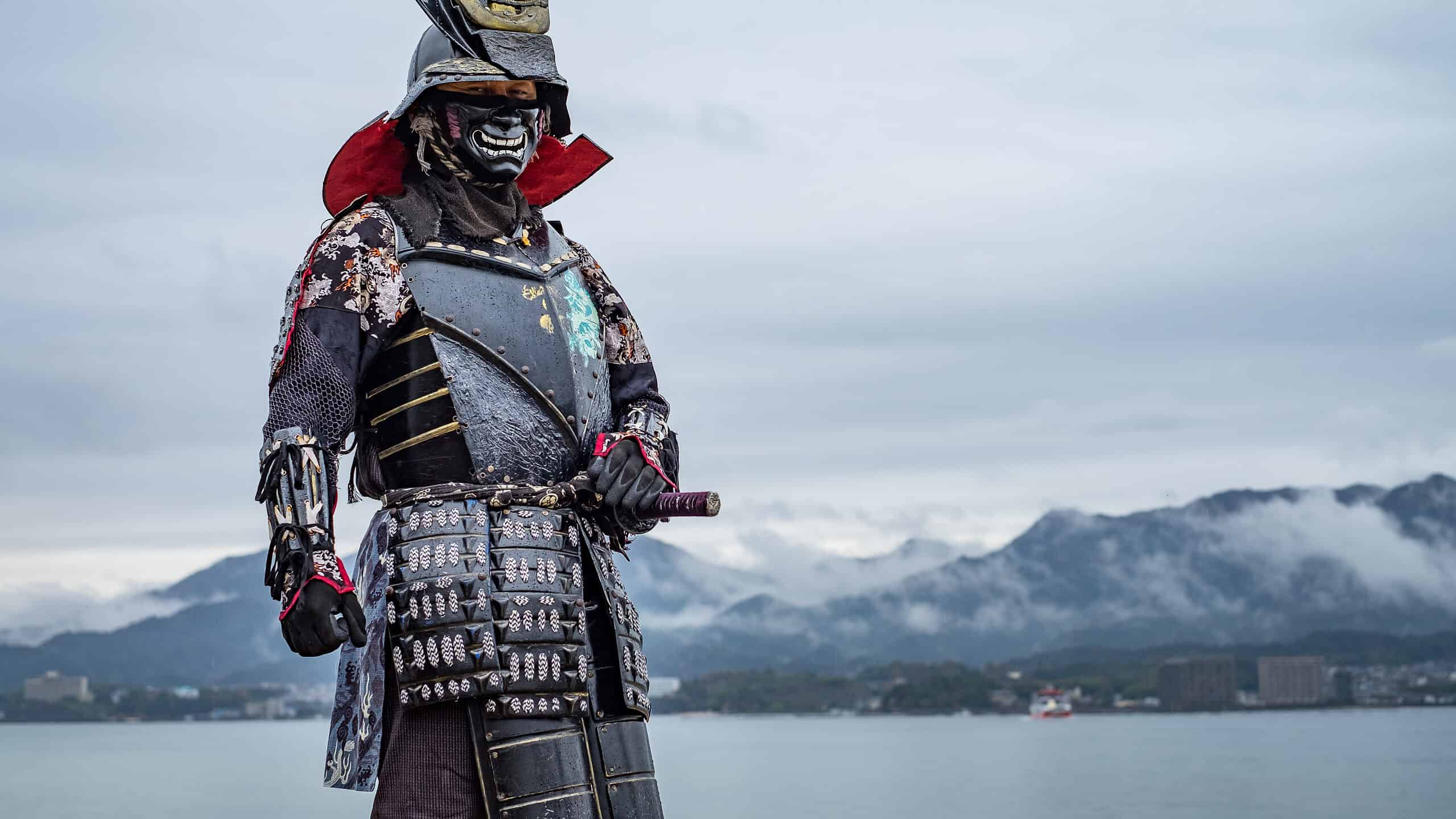Few historical warrior classes evoke the same sort of fascination as the samurai in popular culture. Samurai came to prominence in feudal Japan, notably in the Sengoku period, where figures like Nobunaga Oda, Hideyoshi Toyotomi, and Ieyasu Tokugawa strived to unify the nation. Samurai have been romanticized heavily, being upheld as virtuous, honorable warriors in the likes of film, literature, and other media.
The truth of the samurai, and their weapons of choice, is often shrouded in myth, partly thanks to the aforementioned romanticizing of the warrior class. Their legendary swords certainly capture attention, but that was only one aspect of how these men waged war, with a martial tradition that encompassed not just the katana, but also some other primary arms used throughout the samurai’s most notable period of activity. With that in mind, let’s dispel some of the myths and show the reality behind the way these warriors conducted themselves in battle.
The Katana: Discipline and Harmony
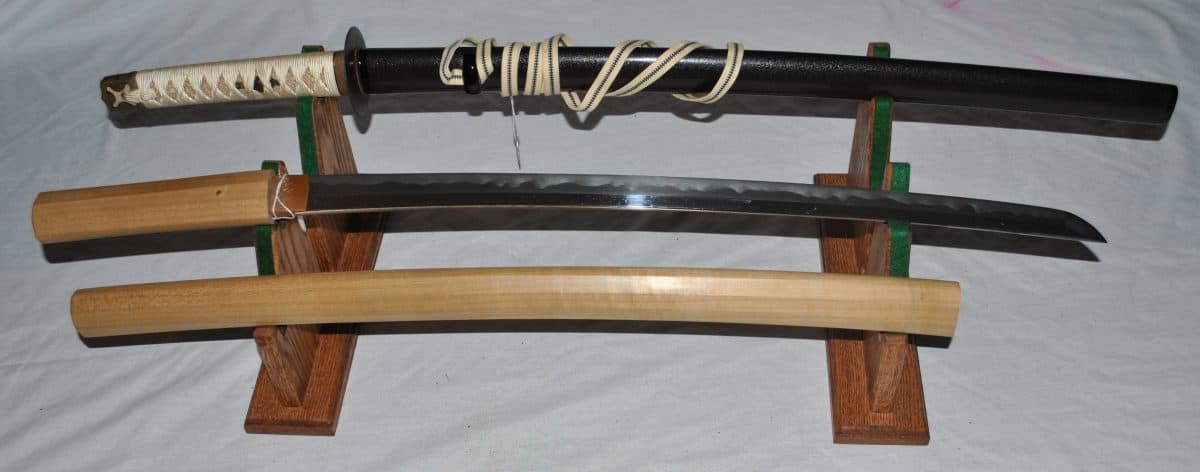
©"Antique Japanese katana" by Samuraiantiqueworld is licensed under BY-SA 3.0. – Original / License
The most notable weapon to be associated with the samurai is the katana, a curved single-edged sword renowned for its razor’s edge. These blades were forged by laborious processes that involved folding and tempering steel multiple times. Given the sheer labor and cost that went into producing a decent katana, these blades achieved something of a mythological reputation themselves.
Contrary to popular belief, thousands of samurai weren’t gathering on the battlefield with their katanas at the ready. The katana was a sidearm first and foremost, more akin to an officer’s handgun in a modern military than it was a primary means of waging war. Throughout much of Japan’s Sengoku period, samurai acted primarily as mounted cavalry, fighting on horseback and primarily making use of polearms to disrupt enemy formations.
The katana was certainly used on the battlefields of feudal Japan, but often as a weapon of last resort or when fighting got too close for a polearm to be practical. That said, the katana has become something far beyond its original purpose, embodying the ethos, social status, and philosophy that have become associated with the samurai.
The Yari: Practicality and Versatility
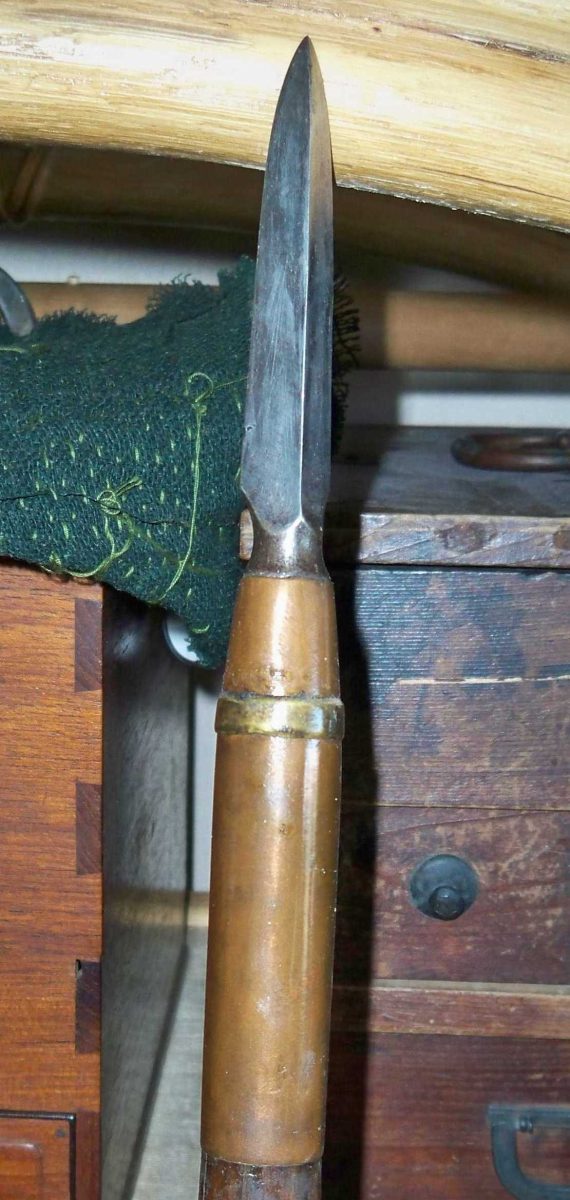
©"Sansaku yari 9" by Samuraiantiqueworld is licensed under BY-SA 3.0. – Original / License
The primary weapon used by many samurai on the battlefield was the yari, or spear, which is arguably the most defining weapon of the period, aside from one other we’ll cover. The traditional Japanese yari featured a pole measuring between 7 to 18 feet or so, and came with blades that managed thrusting, slashing, and parrying just fine.
The yari’s reach and versatility made it a staple of the battlefields of feudal Japan, especially during the Sengoku period. Large-scale warfare has always required discipline and strong command, and massed formations of spearmen on horseback and foot were the order of the day. The yari was often used not just by samurai, but more basic examples were in use by ashigaru, peasants utilized as foot soldiers.
Curiously, the yari has never achieved the same sort of cultural significance as the katana, instead being relegated more to period pieces where historical accuracy is a driving force. It wasn’t uncommon during the Sengoku period for high-ranking samurai to favor ornate, decorated yari as a symbol of command and influence.
The Naginata: Power and Reach
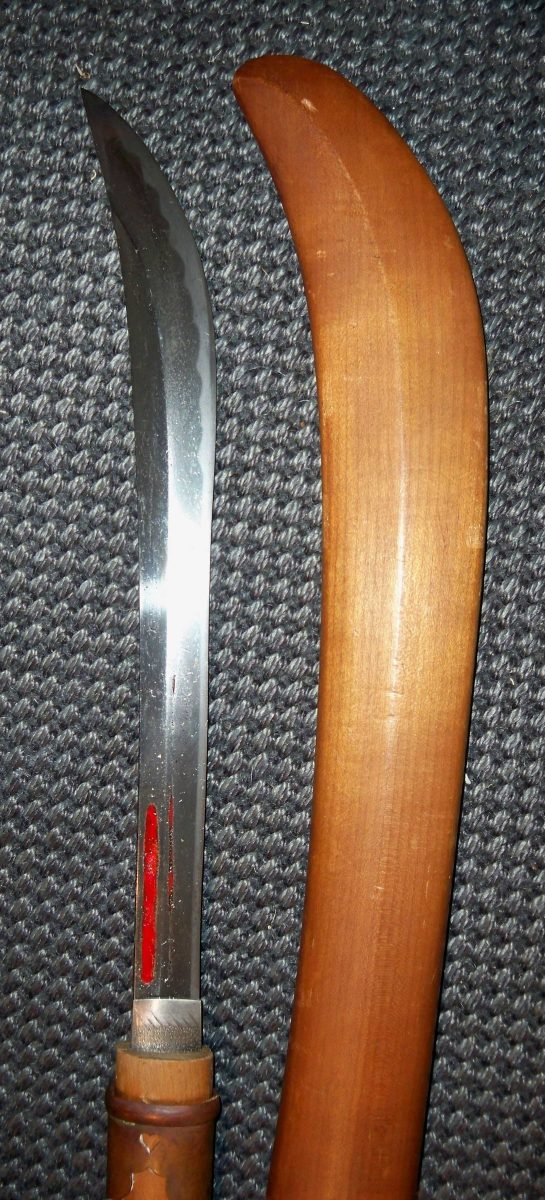
©"Antique Japanese naginata 1" by Samuraiantiqueworld is licensed under BY-SA 3.0. – Original / License
Samurai before the Sengoku period often made use of the naginata, a long polearm with a heavy blade affixed to its end. Its most comparable European equivalent would be something like a halberd, with slashing being a prominent feature of Japanese naginata. The weapon was a prominent sight on the battlefields of the Heian and Kamakura periods of Japan, dating back to around the 8th century or so.
Throughout much of the Heian period, battles were conducted on horseback, with the longbow and polearm ruling the day. Around the 12th century, battles were starting to incorporate more formations on foot, and the naginata began to see some prominent usage. It started falling out of use by the samurai around the 15th century or so, during the Muromachi period.
Battles were starting to see denser formations, and the use case of the naginata was largely handled by the yari. That said, the naginata didn’t completely fall out of favor, remaining the weapon of choice for sohei, or warrior monks, and onna-musha, a class of female warriors belonging to the Japanese aristocracy.
The Yumi: The Original Warrior’s Soul
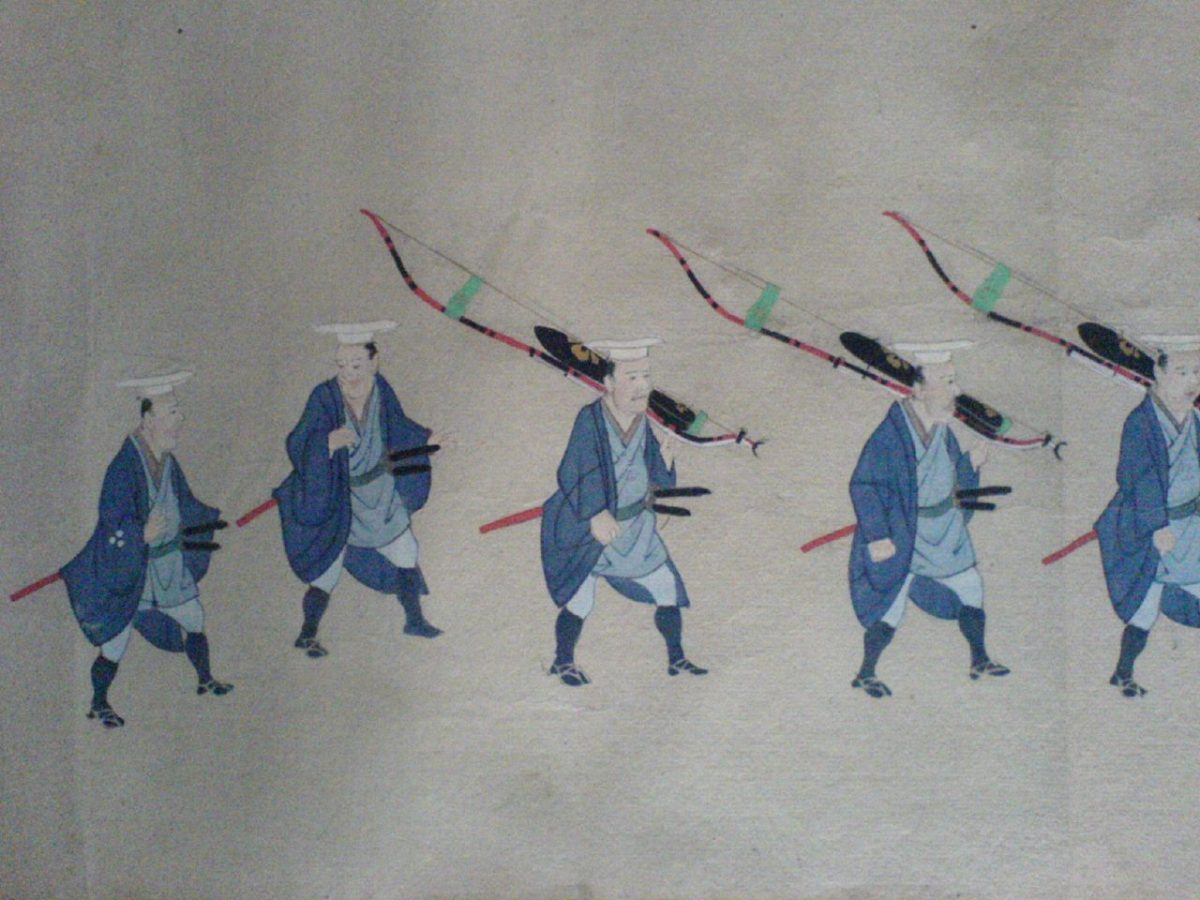
©"File:Images of yumi (bow) and utsubo (quiver).jpg" by Bert23 is licensed under BY-SA 2.0. – Original / License
The katana wasn’t always the preferred weapon to demonstrate the class and standing of a samurai. That honor goes to the yumi, or Japanese long bow. Archery was the central focus of the samurai class during the Heian and Kamakura periods, when mounted archers ultimately dominated the battlefields of Japan.
Unlike more traditional bows used on horseback, like the Mongol recurve, the asymmetrical design of the yumi allowed it to be used on foot or while mounted. Mastery of archery was considered not just a demonstration of martial prowess, but also spiritual discipline. Warfare would inevitably shift toward melee weaponry, as we’ve seen in the prominence of the yari. However, one weapon would start to shift the way samurai waged war in the 16th century.
The yumi would remain in use and still enjoys some popularity as a central focus in kyudo, or the way of the bow, which preserves samurai practices on the bow as a means of meditation and self-growth in the modern era.
The Tanegashima: Firearms Change Warfare
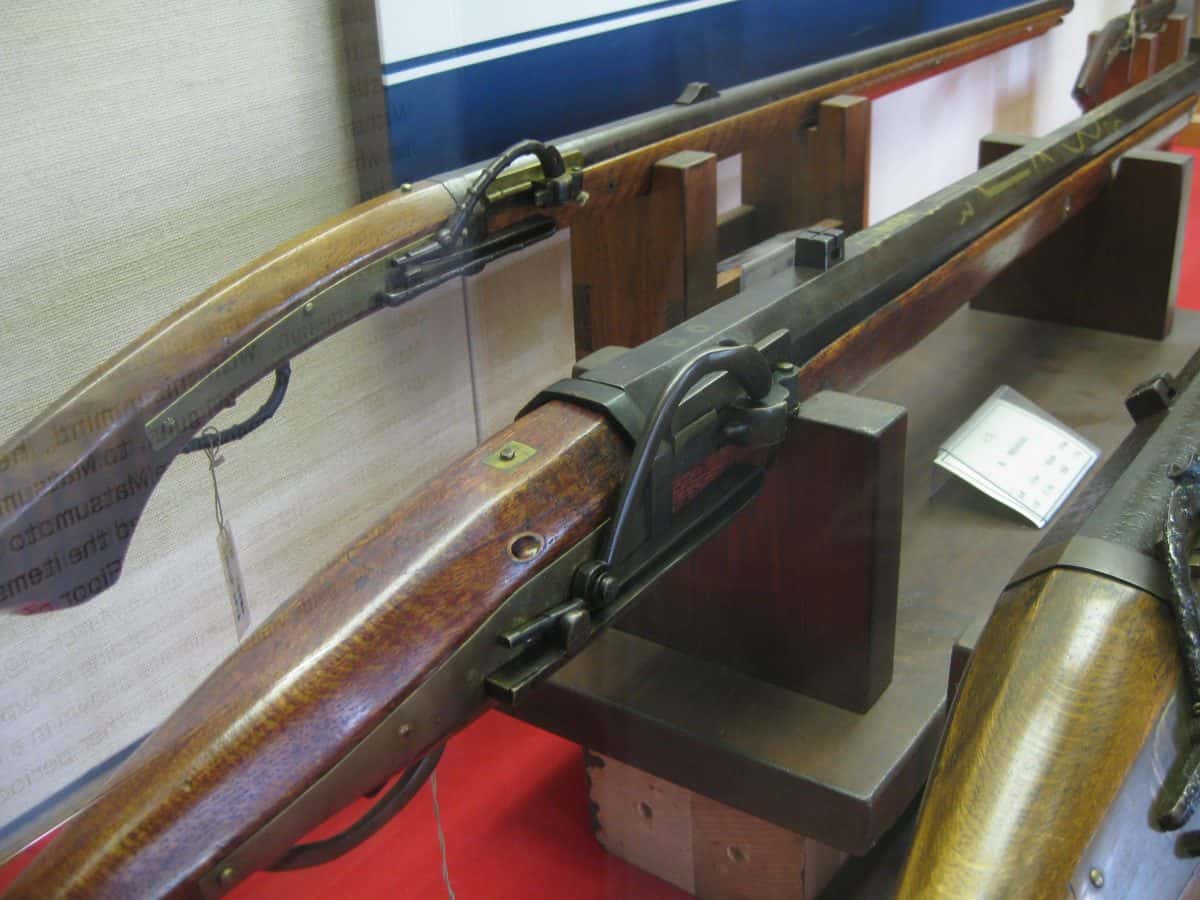
©"Antique Japanese (samurai) tanegashima (matchlock) rifles" by ryochiji is licensed under BY 2.0. – Original / License
European trades, notably the Portuguese, first made contact with Sengoku-era Japan in the mid-16th century. Among the many goods they brought with them, the matchlock musket, or tanegashima, would change the way samurai were utilized on the battlefield. Initially, there was reluctance to make use of Western weaponry, like guns, as the samurai felt it went against the warrior code that so many followed.
However, the Battle of Nagashino in 1575 showed how devastating they could be. An alliance between the Oda and Tokugawa clans, spearheaded by Oda Nobunaga, made use of the tanegashima to counter the Takeda’s renowned cavalry. Nobunaga showed a fair amount of foresight in his use of muskets on the battlefield, with over 3,000 riflemen deployed throughout the battle. Courses of fire were done in waves, with 1,000 men firing at once before setting about to reload and let the next wave open up.
Oda and Takeda forces numbered between 38,000 to 72,000, facing against the Takeda clan’s estimated 15,000 to 20,000 troops. Takeda Shingen had lost many of his best generals in the battle, with the tanegashima cementing itself in the arsenal of samurai going forward.
Conclusion
It’s hard to deny the image of a samurai in armor, wielding a single gleaming katana. Much like European knights, that’s just a romanticized, sanitized take on a warrior class stretching over centuries of warfare. Ultimately, samurai were intended to be devoted, spiritual warriors who were masters of strategy, archery, swordsmanship, and the use of a wider arsenal of arms.
As we’ve looked at today, the arsenal of the samurai is quite varied, with the sword serving as more of a status symbol than a primary means of waging war. Given the impact of weaponry like firearms on how the Japanese waged war, it isn’t a shock to know the samurai’s decline was heavily influenced by Western military doctrine.
The samurai embody the Japanese martial spirit, but the truth, as with all things historical, is far more nuanced. If anything, the samurai were like the knights of Europe, forced to adapt to changing trends and technological progress, which often flew in the face of warrior codes and “honorable” means of waging war.
The image featured at the top of this post is ©siriwat sriphojaroen/Shutterstock.com
